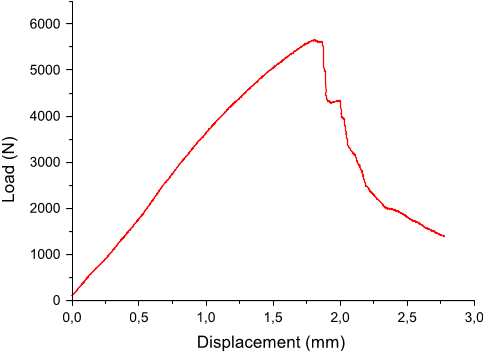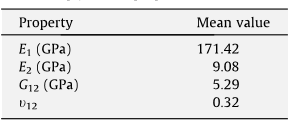Abstract: Ceramic and composite resin blocks for CAD/CAM machining of dental restorations are becoming more common. The sample sizes affordable by these blocks are smaller than ideal for stress intensity factor (SIF) based tests. The J-integral measurement calls for full field strain measurement, making it challenging to conduct. Accordingly, the J-integral values of dental restoration materials used in CAD/CAM restorations have not been reported to date. Digital image correlation (DIC) provides full field strain maps, making it possible to calculate the J-integral value. The aim of this study was to measure the J-integral value for CAD/CAM restorative materials. Four types of materials (sintered IPS E-MAX CAD, non-sintered IPS E-MAX CAD, Vita Mark II and Paradigm MZ100) were used to prepare beam samples for three-point bending tests. J-integrals were calculated for different integral path size and locations with respect to the crack tip. J-integral at path 1 for each material was 1.26±0.31×10(-4)MPam for MZ 100, 0.59±0.28×10(-4)MPam for sintered E-MAX, 0.19±0.07×10(-4)MPam for VM II, and 0.21±0.05×10(-4)MPam for non-sintered E-MAX. There were no significant differences between different integral path size, except for the non-sintered E-MAX group. J-integral paths of non-sintered E-MAX located within 42% of the height of the sample provided consistent values whereas outside this range resulted in lower J-integral values. Moreover, no significant difference was found among different integral path locations. The critical SIF was calculated from J-integral (KJ) along with geometry derived SIF values (KI). KI values were comparable with KJ and geometry based SIF values obtained from literature. Therefore, DIC derived J-integral is a reliable way to assess the fracture toughness of small sized specimens for dental CAD/CAM restorative materials; however, with caution applied to the selection of J-integral path.










![Fig. 8. Geometry of compact compression test specimen (after [14], dimensions in mm).](/figures/fig-8-geometry-of-compact-compression-test-specimen-after-14-2il680ky.png)

![Fig. 7. Geometry of compact tension test specimen (after [14], dimensions in mm).](/figures/fig-7-geometry-of-compact-tension-test-specimen-after-14-3v7xvx69.png)
